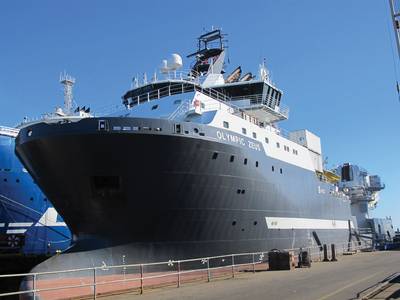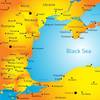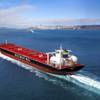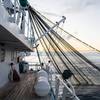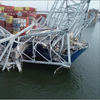BWT CASE STUDY: Hyde, PG & OSVs
While much of the focus on Ballast Water Management issues is on the big ship, blue water fleet, there is a growing large need for BWMS on large modern offshore vessels, too.
Hyde Marine has long been active in the worldwide effort to control the spread of aquatic invasive species in ballast water. Early on, Hyde supplied the first fully operational shipboard Ballast Water Treatment system. In 2003, after requirements were better defined, Hyde installed a state-of-the-art filtration and UV disinfection system aboard the Coral Princess. This system was tested extensively on land based installations and onboard the Coral Princess in the fall of 2004. The onboard tests demonstrated the Hyde Guardian’s capability to meet the IMO BWT Convention requirements.
Hyde’s Guardian Ballast Water Treatment Systems have IMO Type Approval for capacity from 60 to 6,000 cu. m./hr. A Type Approval Certificate has been issued by Lloyd’s Register on behalf of the U.K. Maritime and Coastguard Agency to confirm compliance with Guidelines contained in IMO resolution MEPC.174(58).
With more than 225 BWT systems already sold into the marine markets via about 180 ships, Hyde is well known in blue water shipping as a top tier provider of BWT solutions. But, Hyde has also sold as many as 75 systems to Offshore Supply Vessel (OSV) owners and also sells to a myriad of other smaller platform operators as well. In fact, Jim Mackey of Hyde Marine told MarineNews – sister publication to Maritime Reporter & Engineering News – in February that about one half of Hyde systems sold to date have been placed onto OSV’s and smaller sized – less than 300 foot – vessels. These include tugs, research vessels, fishing vessels, dredges and private passenger vessels. Mackey explained, “We don’t want to be buttonholed into just one market, but we are very effective in serving that sector, and it is certainly a big part of our business.” He added, “Success has made us an expert in that area.”
Enter PG Marine
PG Marine Group is a well-recognized name in liquid cargo systems for the global OSV fleet. The core of PG Marine’s business is pumps, and pumping systems for the oil and gas sector, in particular those systems used by offshore service providers. PG started screening the BWTS market at the point of time when the first products were being IMO Type Approved. Early on, it became clear that they had to narrow down to technologies which target the market’s demands. These include low CAPEX, low OPEX and flexibility in installation.
According to Roy Norum CEO of PG Marine Group, “It was clear to us that Hyde Guardian met the criteria at an attractive profile to PG’s market approach.” Norum also said that PG gave early commitment to Hyde to high market shares within the Norwegian shipping market regionally, and the Global OSV Market internationally. PG has since the represented Hyde exclusively for these market segments.
Since then, PG has built fabrication, testing and packaging capacities and secured contracts for newbuilds and retro-fits for Hyde for about 75 vessels. To date PG has secured seven BWTS units in the U.S. market. To meet what is expected to be overwhelming global demand, PG is currently building a new 94,000 sq. ft. fabrication facility in Norway, in which an initial BWTS fabrication capacity of 400 units annually is secured. The PG philosophy includes making the BWT installation process as painless as possible, with only one to two days needed after installation for commissioning, and, according to the company, will even train larger customers to commission their own units to ease the pain of early installation.
In short, PG Marine Group knows the OSV markets well. And since many operators want to use the same pumps for cargo as they employ for ballast water handling, the relationship between PG Marine and Hyde becomes clearer. PG Marine also has the in-house technical and engineering expertise to meld the Hyde solution into one of its own systems, or conversely, an existing ship already in service. PG Marine Group, therefore, is a close technical and business partner for Hyde, acting in certain cases as Hyde commissioning engineers. Rather than just shoehorning any solution onto a particular hull, PG Marine and Hyde work together to provide a seamless, integrated approach, leveraging the strengths of both groups into a predictable outcome, backed by global service.
BWT for OSVs
Increasingly, OSV owners are starting to look at BWT systems for newbuild projects, as it is more expensive to retrofit BWT onto an existing hull then it would be to design and properly plan installation during the newbuild process.
One of the biggest challenges in the OSV sector is the lack of space onboard these highly specialized, but compact workboats. Normally, there is plenty of power, but the available space to place BWT equipment can be more than 15% less than what might be available in the typical VLCC pump room. To that end, PG Marine and Hyde provide 2D and 3D design-modeling, physical engineering onboard, prefabrication and the flexibility that Hyde’s BWT solution can be split and built into clusters, lines, L-shaped formations or even stacked. And while the physical footprint of Hyde’s equipment isn’t the smallest in the industry, it arguably is the most flexible in terms of configuration on the vessel.
While retrofits can involve more money, time and complications, they can be done, and Hyde, through its partnership with PG Marine, has been involved in a fair share of this type of installation. The OSV Olympic Zeus installation – sold through PG Marine – is a perfect example of one such job. Tight spaces and the need for a compact physical footprint and a simple design were all part of the winning package.
Operating in today’s OSV markets, however, requires savvy that extends far beyond simple cost comparisons of systems. Owners who want to be in a position of being able to quickly reposition a vessel from one are to another also need to know that ballast water compliance issues may come into play. And with OSV day rates commanding breathtaking six figure magnitude for some specialties, operators do not want to lose even one day of fees. And, in the not-too-distant future, the difference in securing an oil major’s offshore support work and losing that work to a competitor could well come down to which operator has the best, most environmentally sound and compliant equipment on board. – JK
(As published in the May 2013 edition of Maritime Reporter & Engineering News - www.marinelink.com)



